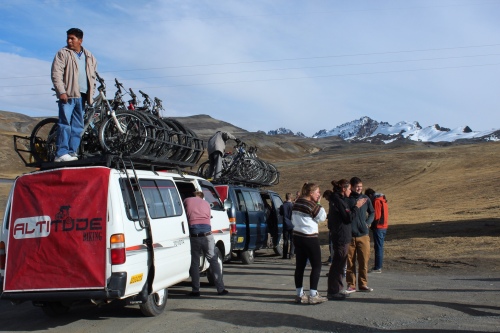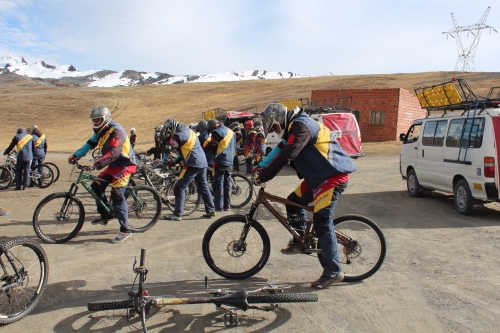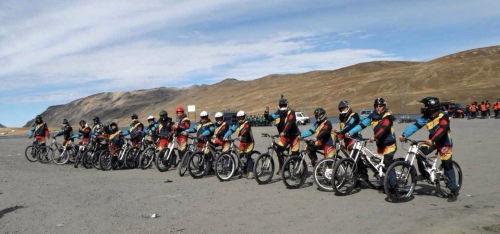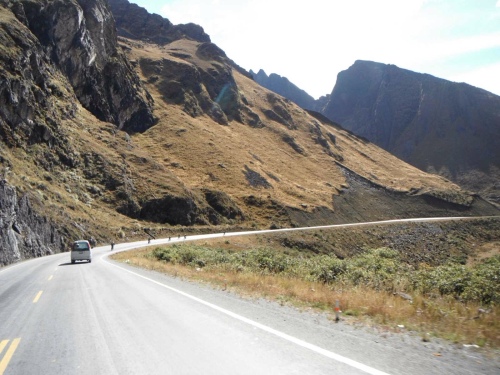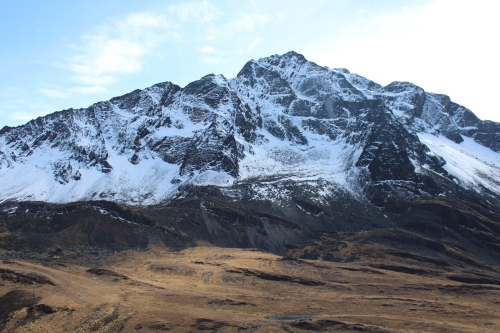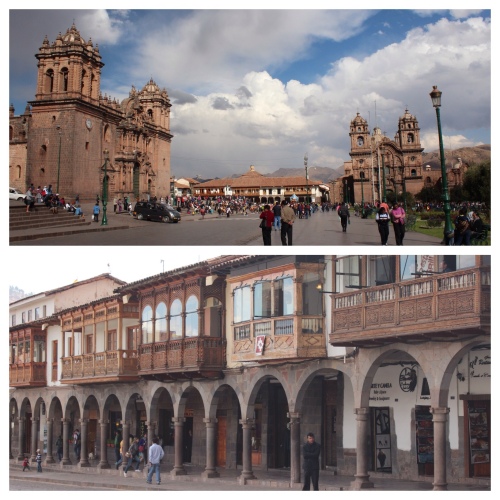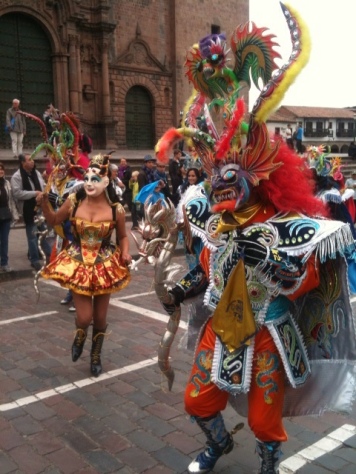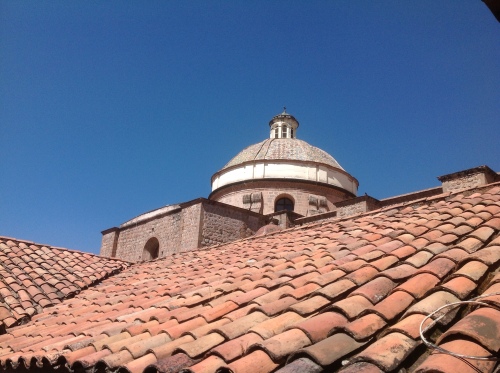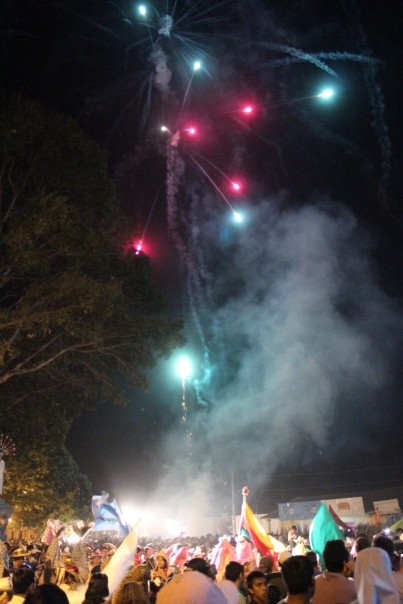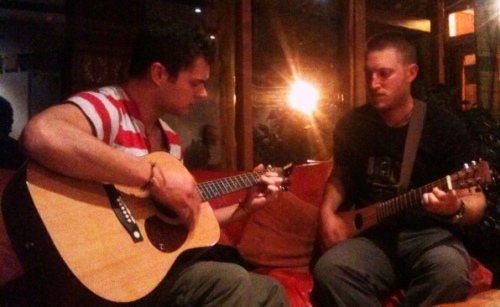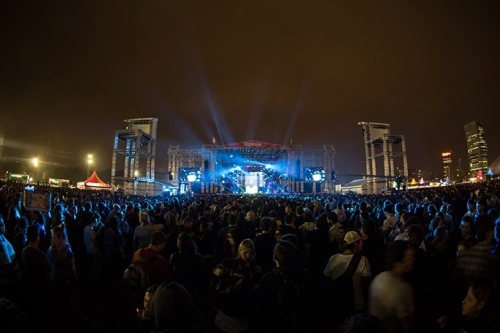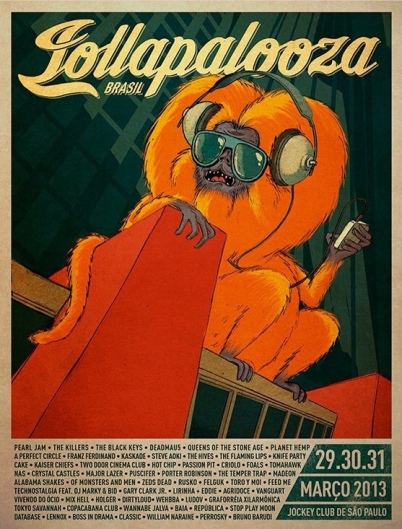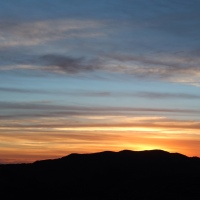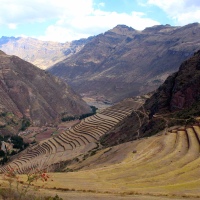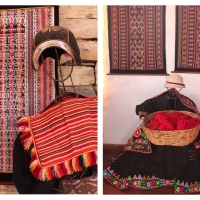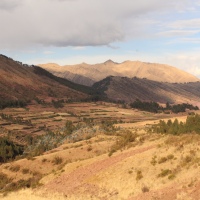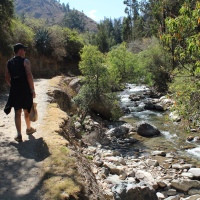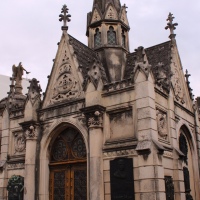Taking a guitar on the road was one of the best decisions I (Mark) made. It is a great way to meet people and liven up a common room.

During our travels I've taken an interest in South America's traditional instruments and the people that make them. I thought I would share a few stories for fellow musicians.
Bariloche – A Cabin in the Snow
I have been travelling with a Martin & Co. Backpacker Guitar. You can see it in the photo above. It's an acoustic electric tapered to be light weight and to fit into overhead compartments on planes. It's been a great companion but eventually it needed some maintanence (the mic jack fell out).
So after a couple of enquiries I managed to get in touch with a luthier in Bariloche. With a street address and vague instructions about heading up the mountain behind town I jumped in a cab and headed out into the snow.
It soon became clear that the cabbie was lost. We knew that our destination was somewhere up on the mountain, the trick was finding it amongst the labrynthine back roads and forest. The snow was starting to fall heavily as well, which didn't help.
After driving for an hour through the forest we found a path in the woods. I struck out on my own and soon found a cabin surrounded by snow covered trees. I'll never forget the impression when the door opened: there was the smiling luthier and his apprentice. Behind them was a room full of guitars with a crackling fire. I could have stayed the night!
I must have been there for about two hours. We chatted and listened to Argentine folk music while they set about making the repairs. I was in no rush to leave. I remember watching big snow flakes fall outside the window. Magic.
Eventually things were sorted and I was on my way. It was a good time, my thanks to Hernán Rojo for the help (rojoluthier@hotmail.com, rojoluthier.blogspot.com, 02944 15411156).
Tilcara – A Flute and Kalimba
When we were planning our trip I hadn't thought about buying musical instruments as we travelled, but I got inspired when I met a Frenchie that had bought a kalimba in Córdoba. The kalimba is a popular folk instrument from the Argentine pampas. It is traditionally made out of gourde and wood, with the sound produced by striking a metal comb.
The kalimba produces beautiful tones and being so small it is easy to travel with. The idea of owning one grew on me, partly because I had begun to experiment with my own music recordings.
We were lucky to stumble across a luthier in Tilcara who made a range of musical instruments: charangos, guitars, flutes, kalimbas, pan pipes and rattles. Talk about a kid in a toy store! Even Sas got inspired, the craftsmanship was so good. We walked away with an instrument each; Sas bought a flute and I finally bought a kalimba. Happy days!
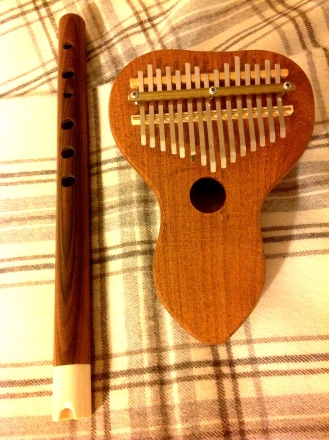
The flute and the kalimba.
The following is a short recording of my kalimba. The track was composed using a drum machine app (DM1) and a loop app (Loopy HD) on my iPad. Effects were added with Cubasis.
We purchased our instruments from 'El Sikuri', near the Pukara ruins in Tilcara, Argentina. The luthiers working out of the shop are De Micaela Chauque and Andrés Santanita (http://elsikuri.blogspot.com/).
La Paz – Home of the Charango
While I was happy with my kalimba the shop in Tilcara had left me hungry to purchase a charango. As it happened the guy managing our hostel in Tilcara could play and he ripped out a song for us. It was awesome and I had to have one!
Now, you may be wondering “what the hell is a charango?” The charango is a nylon 10 string solid body instrument. The strings are paired into five sets and tuned G-C-E-A-E. Inspired by the Spanish lute and guitar, the charango was invented because the Spanish colonisers refused to let the native people play their instruments.
Traditionally made out of armadillo shells and wood, it is now considered unethical to use armadillo (I've also seen them made out of turtle shells and a miner's helmet). The body and neck are one piece and the soundboard, bridge and fretboard are made from different types of wood (as with guitars). Note that it is good to ask about the woods as they do change, particularly with the fretboard.
La Paz has become the home of the charango with many stores selling the work of Bolivia's talented luthiers. I must have played around 20 across four shops in La Paz before I made my choice. There is a range of quality in terms of tone and craftsmanship and I wanted something that sounded good and was well made. This turned out to be a challenge but I got there…
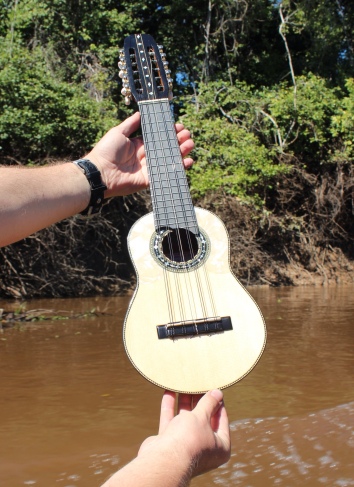
Ain't she a beauty?
The charango was made by Everth Zapata of La Paz. Unfortunately I didn't meet him as the luthiers do not work in the music shops in La Paz, but that's ok.
As an aside, I highly recommend a visit to the Museo de Instrumentos Musicales de Bolivia in La Paz. For only 5 Bolivianos (less than 1 US dollar or AUD) it is possible to learn about the huge range of traditional instruments in South America, including those used by the Incas.
There's an incredible variation between countries. I saw guitars of many different shapes, such as elongated designs from Puerto Rico, Panama and Brazil. There were also 6, 8, 12, 15, 16 and 18 string guitars (try searching for a Guitarrón Chileno) and even double sided charangos, guitars and violins (two necks back to back).
String instruments are hugely popular but the collection also includes pan pipes, drums and flutes. I particularly liked the Inca flute designs, which are instantly recognisable and used a mix of zoomorphic and sexual designs. There's even a petrified mummy on display to show that instruments were buried with the dead pre-colonisation. Be sure to check it out if you are in town!

